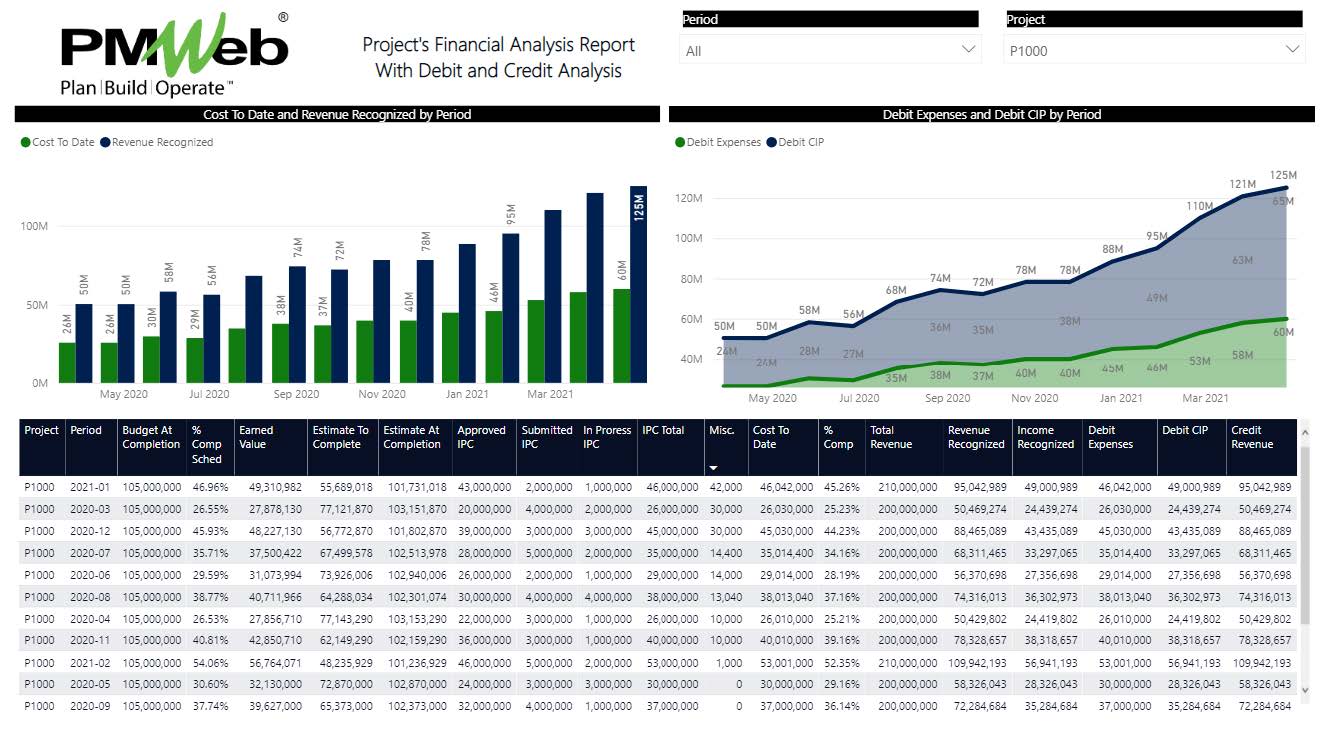Regardless of the CRM solution selected by a real estate developer, there is always a requirement to associate the captured CRM data with the data captured in a Project Management Information System (PMIS) like PMWeb. This is essential for real estate developers who need to look at several factors to understand the success of their development project. Sales numbers and inventory sold, types of interactions that led to a sale, the marketing efforts that contributed the most leads, and the most successful campaigns by the agents are all important functions that a CRM can provide. Nevertheless, a PMIS is where all the other information associated with real estate development is managed and captured. Failing to associate those two data sources could result in incomplete and misleading information that might negatively impact the validity of decisions made by the real estate developer.
A real estate developer usually uses CRM solutions to facilitate the relationship between their sales agents and potential buyers and even helps track the most successful marketing campaigns and sources. Nevertheless, many CRM solutions might lack some of the critical functionalities that are required by real estate developers. For example, those would include managing all sales and long and short-term lease contract agreements for which many of those contract agreements need to go through a formal process before they are approved. The payment terms of those contract agreements could be associated with project schedule milestone dates.
In addition, there could be a need to have details on the status of real estate assets inventory for single project development or across the complete real estate development projects’ portfolio. When reporting on the assets inventory, there might be a requirement to group, sort, compare and filter the generated information by certain data fields like asset size, price, buyer or occupant, and others. This information is also important for identifying purchase patterns and sales trends to provide a real-time single version of the truth of the whole projects’ portfolio as well as for a single project status of sales revenue tracking and performance breakdowns.The CRM and PMIS data create the real-time single version of the truth reports that each real estate developer requires. For example, a report could be created for each real estate development asset for which it also includes a visual for the project’s Building Information Modelling (BIM) model. The BIM model and associated data can export in a format that can be read, used, and visualized in MS Power BI using the “3DBI” visual developed by KG-DEV (https://kg-dev.be/). The BIM visual can help display the properties that were sold or closed, under negotiation and available.
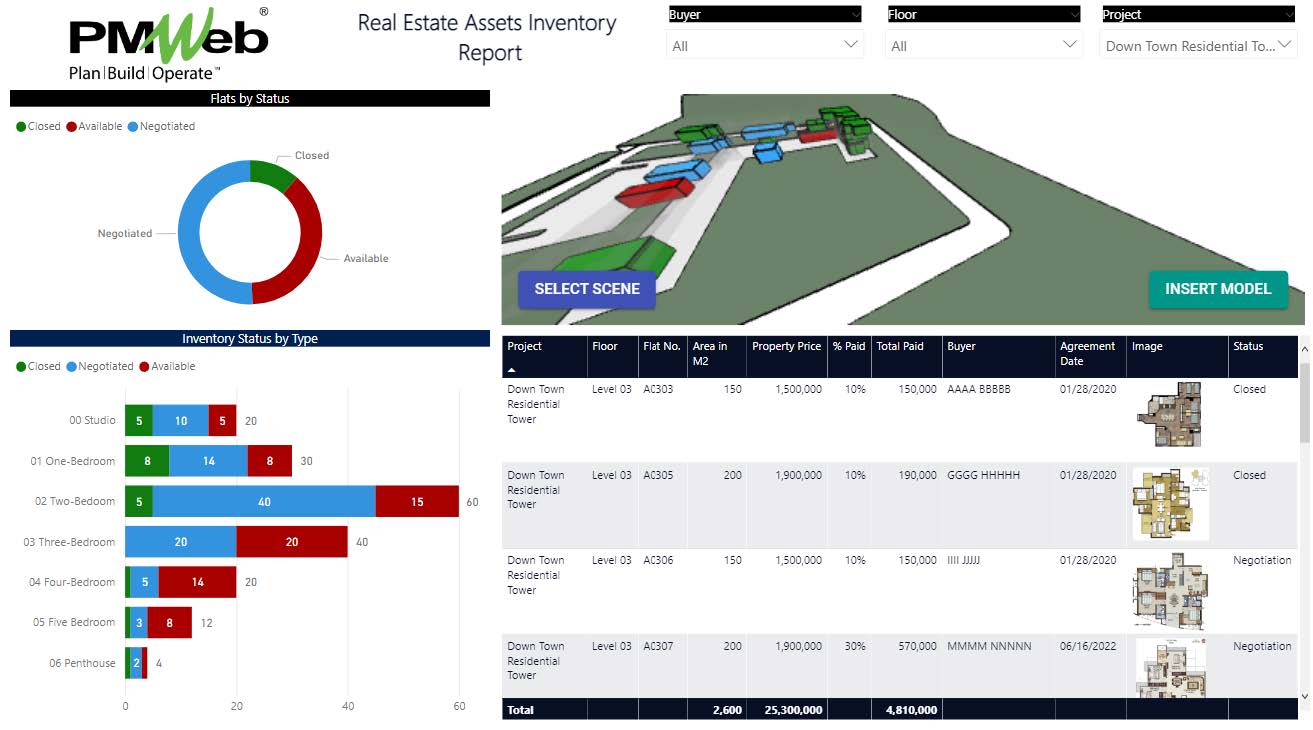
In addition, another report can be created to capture the details of all development projects that the real estate developer might have. The report can include a map visual like the one available from “Icon Map” (https://icon-map.com/) that enables viewing the boundaries of each project. The report is configurable to enable the reader to drill down to each real estate development report displayed above.
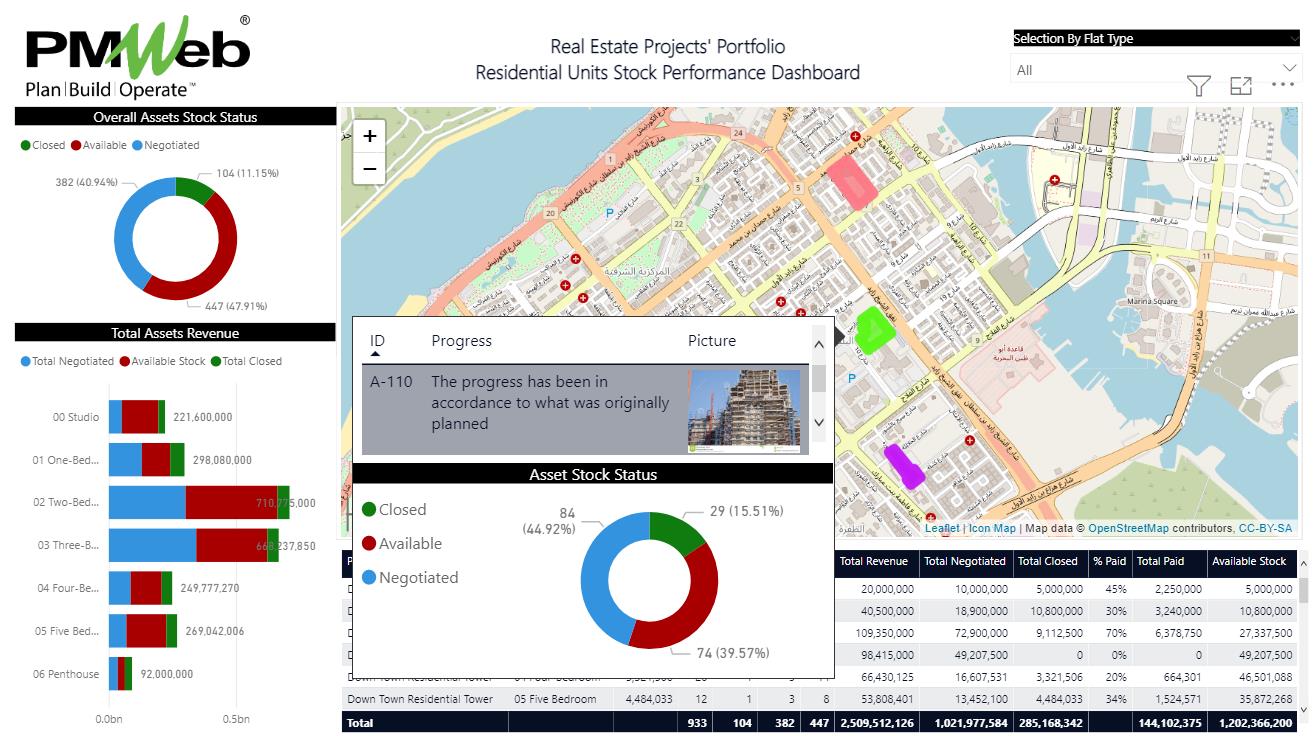
Furthermore, the PMWeb Revenue Contract module helps manage the data associated with the sales or revenue of all those assets. The level of details for the income contracts depends on each real estate developer’s requirement. For example, there could be a single revenue contract for each project for which it details all available assets in the project for which each asset is shown as a single line item. Nevertheless, if the real estate developer wants full details on each asset, then a separate revenue contract is created for inventory stock items. Those contracts itemize the payment plan and link each payment installment with the relevant project schedule milestone activity as well as the financial period that the payment is scheduled to be made.
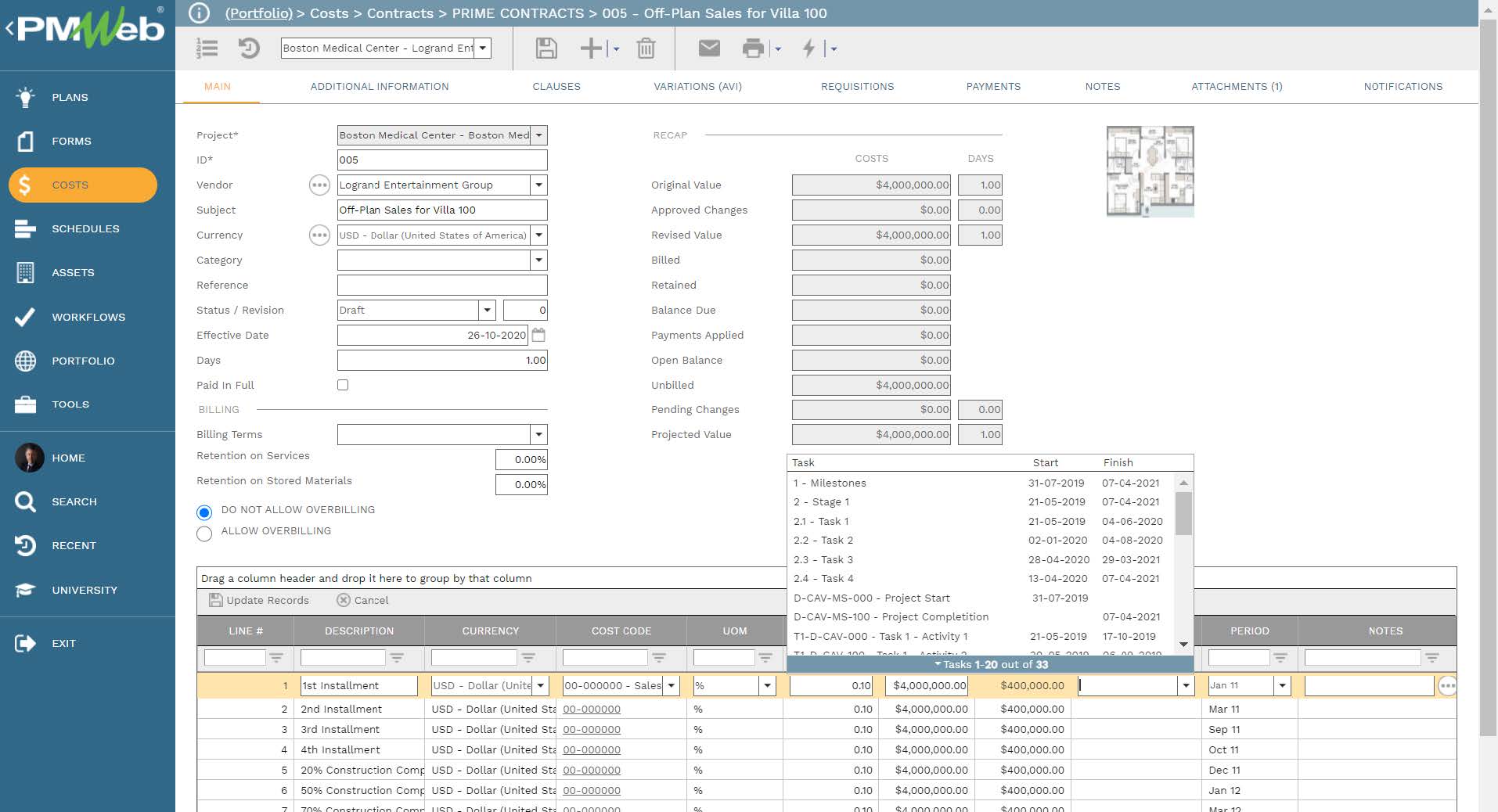
Each sales agreement will be attached with all supportive documents such as flat layout, signed sales agreement among others that will be uploaded and stored on the PMWeb document management repository. In addition, links to other PMWeb records can also be added.

Assigning a workflow to the sales agreement or revenue contract agreement ensures that they have been formally reviewed and approved by the assigned team members including those involved in delivering the project. The workflow identifies the tasks to be performed and in what sequence, the responsibility assigned to each task, the duration of each task, and the actions that can be taken by the assigned team member. In addition, the workflow can embed conditions to enforce the approval authority levels assigned with the property sale price, property type among others.

When a user initiates a business process transaction, the workflow tab available on the relevant template begins capturing the planned review and approve workflow tasks for each transaction as well as the actual history of those review and approval tasks. The captured workflow data includes the actual action data and time, done by who, action taken, comments made, and whether team input was requested.
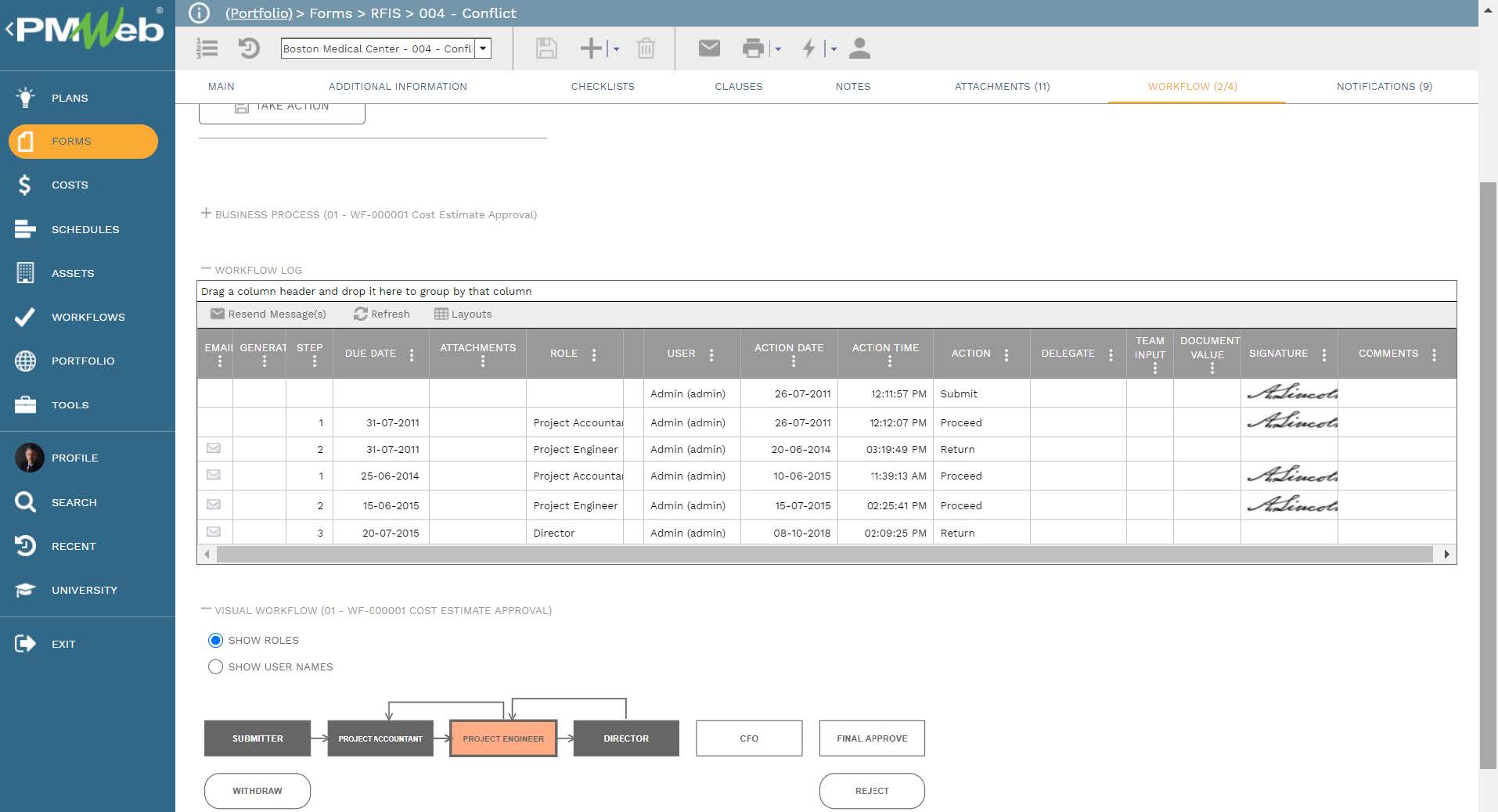
PMWeb Word module helps create the sales agreement templates so they can be generated using the data captured in the contract module. The content of those agreement templates can be copied from the current agreement templates used by the property developer. PMWeb provides the option to generate the sales agreement in MS Word or PDF file format. The wet-signed agreement needs to be scanned, uploaded, and stored in its designated document management system folder. The scanned agreement will also be attached to the relevant contract record. Those agreements can be in English, Spanish, Arabic, or any other desired language.
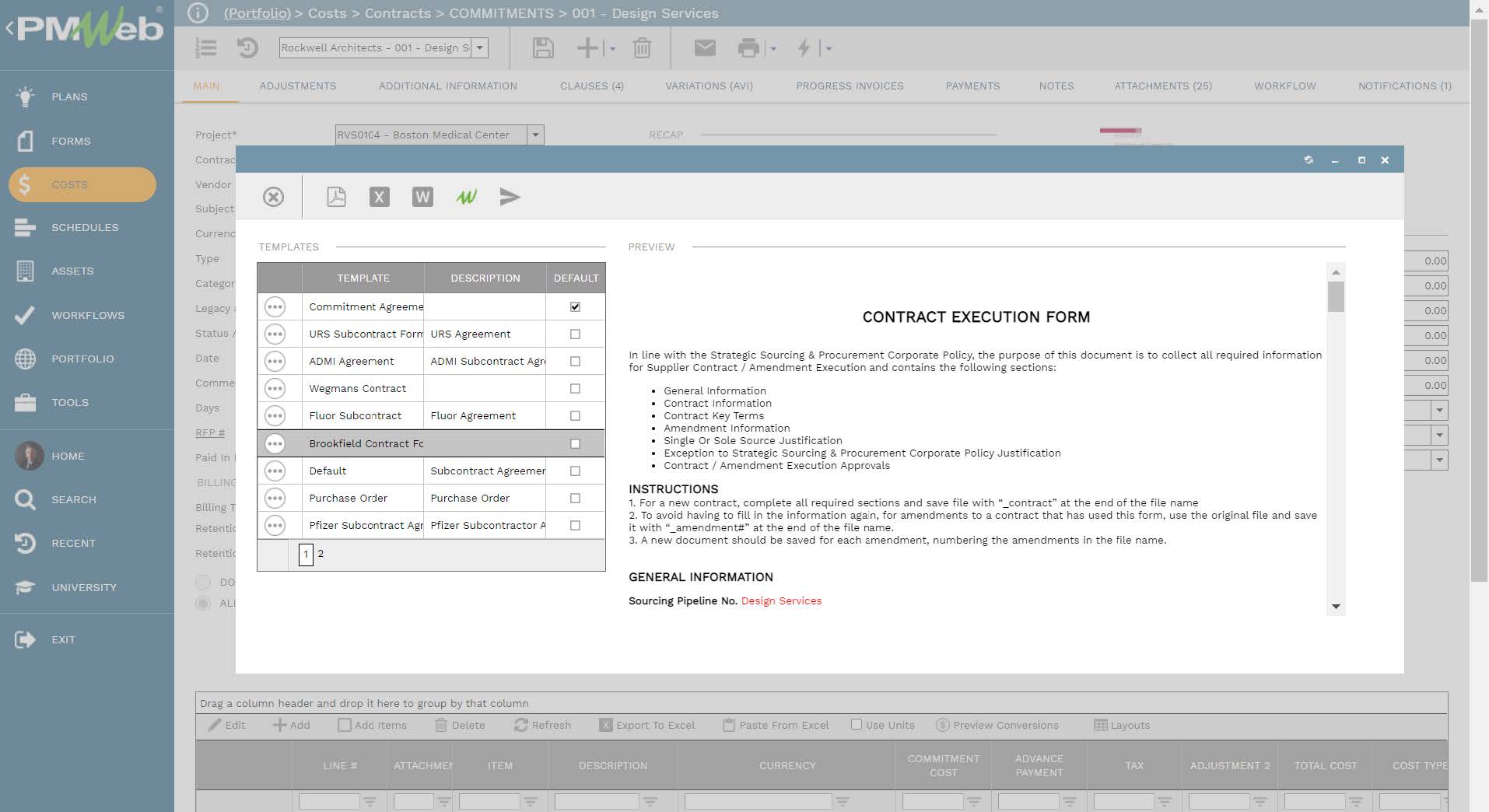
The sales contract also has the option to capture and manage changes to the sales agreement should this be needed, issued payment invoices for the payment plan, and details of actual payments received against those invoices. This enables the real estate developer to have a real-time, single version of the truth on the approved sale agreements.
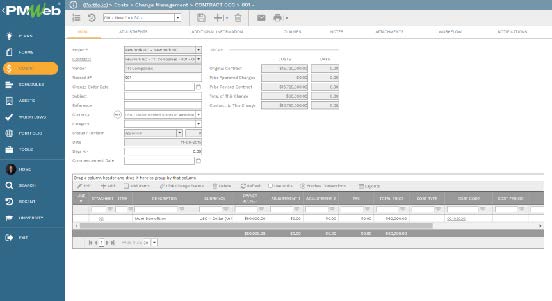
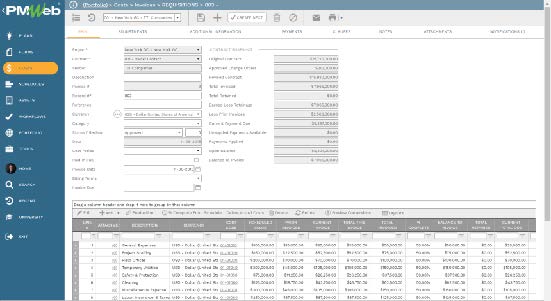
The income data captured in the revenue contracts along with the cost data captured in the commitment contracts and other related business processes managed using PMWeb enables the real estate developer to also have a real-time single version of the truth of each real estate development as well as the complete real estate development projects’ portfolio.For example, the reader of the Revenue and Income Recognition report can select a specific project or period to have details of the current values of all financial figures that impact the real estate developer’s bottom line. The report can be also designed to enable drilling down to the cost management transaction for the required data field. The report can be also designed to display the location of each real estate development project.
